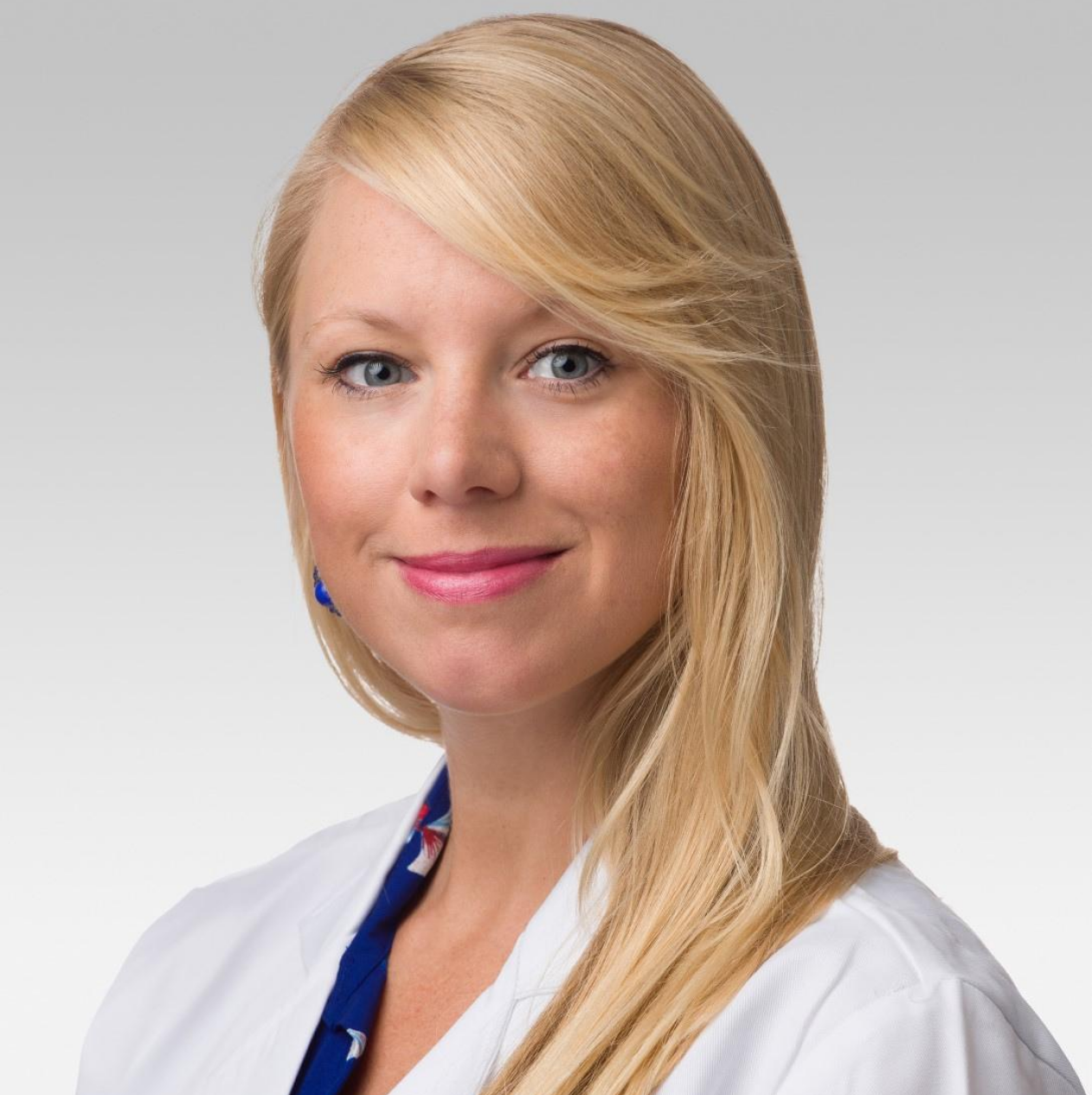Danielle Larson, MD
2019 HDSA Human Biology Fellow
Northwestern University
Mentors: Danny Bega, MD, MSCI & Tanya Simuni, MD
“TeleHD: Feasibility, validity, and value of telemedicine for motor and non-motor assessments in patients with HD”
Can you tell us a little about yourself and how you got involved in HD research?
I am a Movement Disorder Specialist at Northwestern. I recently completed my Movement Disorders fellowship at Northwestern, where I was privileged to be involved in Huntington’s disease care under the mentorship of Dr. Danny Bega at Northwestern’s HDSA Center of Excellence. I was not only drawn to the complex yet fulfilling clinical management of HD, but also to the exciting arena of HD research. After gaining experience with Dr. Bega as a sub-investigator on HD multi-center clinical trials, investigating potential disease-modifying treatments, I knew that I wanted to be more involved in developing my own HD research. Telemedicine is becoming an important part of Neurological care, so it made sense to design a study of telemedicine for HD care.
In layman’s terms, please tell us some highlights about your HDSA-funded project. What is the potential impact of your project on HD research?
My HDSA-funded project is a study of telemedicine use for Huntington’s disease assessment and care. The study, called TeleHD, is being conducted at Northwestern with 40 participants, who are individuals with HD. The study is looking to confirm that motor and non-motor symptoms of HD can be assessed virtually via telemedicine, just like they can during in-person clinic visits. This investigation can also show if individuals with HD and their families are satisfied with telemedicine visits, and if it decreases their travel and cost burdens for routine HD care.
The TeleHD Study has the potential to have a large impact on HD clinical care and research methods. If the study shows that televisits can be effective for assessing HD symptoms, and that HD individuals and their families are satisfied by televisits, this will inform the Neurologic community that televisits can and should be done for HD patients to improve their access to specialized, expert care and decrease the patient burden of receiving care. In addition to improving access to clinical care, if televisits are incorporated into research practices, this could increase the opportunity for HD patients to participate in clinical trials, as time and distance burden would be lessened.
What do you like most about your work or the HD research field, and what is your biggest challenge?
It is a very exciting time for HD research, as more potential disease-modifying genetic therapies are being developed and studied in our HD patients. As a provider and researcher, it is gratifying and encouraging to see the hope that our HD patients, families, and the HD community has regarding the potential promise of research. I am humbled and invigorated by the dedication and perseverance of individuals with HD and their families, who devote their time and energy to HD research and advocacy.
The most challenging aspect of research is the time that it takes to identify participants, have all participants complete the study, and analyze the results so that the findings can be shared with the HD community.
When you’re not working on HD research, what do you do for fun?
I enjoy the meditative and fitness aspects of yoga, exploring new cuisine through cooking and dining out in Chicago, and reading subjects other than science, such as philosophy or behavioral economics.
What has the grant support from HDSA meant to you?
HDSA’s grant support was imperative to the funding of the TeleHD Study. HDSA’s support has ensured that this study could be implemented, and hopefully have a long-lasting positive impact on individuals with HD, their families, and the HD community. I am very thankful for the opportunity to conduct and complete this study.

 Danielle Larson, MD
Danielle Larson, MD 